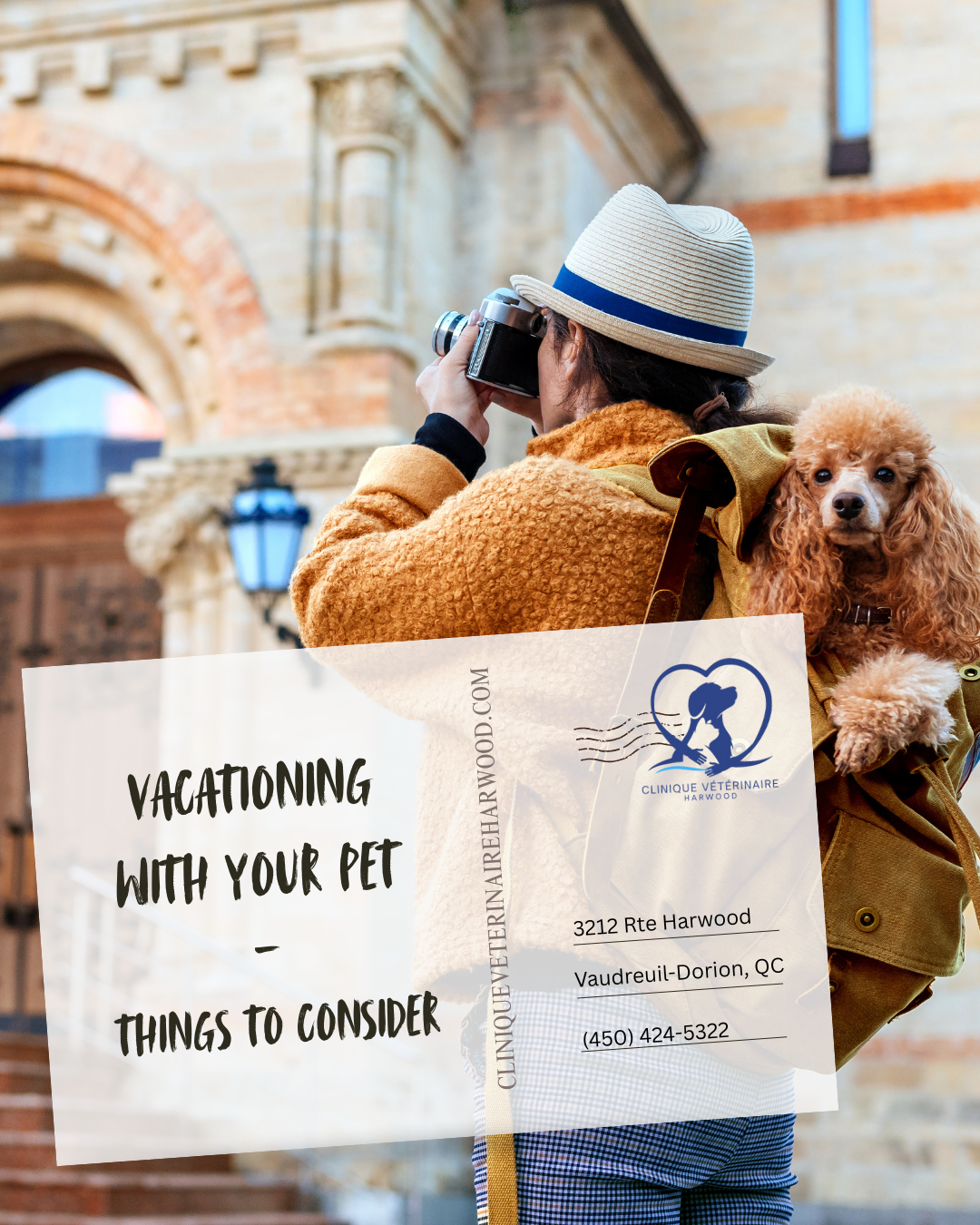
How to Keep Your Dog or Cat Safe During a Heatwave
July 17, 2025Traveling on Vacation with Your Pet: Things to Consider Before You Go
Planning a vacation is exciting—and for many pet parents, the thought of leaving their furry friend behind can feel incomplete. Taking your pet with you on vacation can be an incredibly rewarding experience, but it also comes with challenges and responsibilities. As a veterinarian, I’ve seen what can go wrong when pet travel isn't well thought out. That’s why careful planning is essential for a smooth, safe, and enjoyable trip—for both you and your four-legged companion.
Below are the key things to consider before traveling with your dog or cat, from health and safety to comfort and logistics.

1. Evaluate If Your Pet Is a Good Travel Candidate
Not all pets are cut out for travel. Some thrive on adventure and new environments, while others experience anxiety, motion sickness, or stress when removed from familiar surroundings. Dogs generally adapt better than cats to travel, but temperament, age, and health should be your first considerations.
Ask yourself:
-
Does my pet enjoy car rides or being in new places?
-
Do they get easily stressed in noisy or unfamiliar environments?
-
Are they healthy enough to travel long distances?
If you’re unsure, speak with your veterinarian. They can assess your pet’s suitability for travel and recommend calming options or medications if needed.
2. Visit Your Veterinarian Before the Trip
A pre-travel veterinary check-up is essential. This ensures your pet is fit for travel and up to date on vaccinations. If you're traveling across provincial, state, or international borders, you may need an official health certificate and proof of rabies vaccination.
Your vet can also:
-
Microchip your pet or update contact info in the registry
-
Prescribe anti-nausea or anti-anxiety medication if appropriate
-
Provide flea/tick prevention (especially if you’re heading to a new region)
3. Plan for Pet-Friendly Accommodations
Before booking your hotel, Airbnb, or resort, verify their pet policy. Many pet-friendly accommodations have specific rules about breed, size, fees, and whether pets can be left unattended.
Look for places that offer:
-
Pet amenities like treats, bowls, or beds
-
Nearby green spaces or walking trails
-
Flexible cancellation or deposit policies
Pro Tip: Some apps and websites specialize in pet-friendly travel (like BringFido or PetFriendly.io), making it easier to plan.
4. Prepare a Travel Kit Just for Your Pet
Your pet will need their own suitcase! Whether traveling by car, plane, or train, pack a dedicated kit with everything your pet may need for the duration of your trip.
Essentials include:
-
Crate or carrier with ID tag
-
Leash, harness, and collar with updated ID tags
-
Food, water, travel bowls
-
Any medications, supplements, or special diets
-
Waste bags or litter and tray
-
Towels and pet wipes
-
Bedding or a familiar toy for comfort
Having everything handy makes unexpected delays or detours less stressful for both of you.
5. Keep Your Pet Safe in Transit
By Car:
Use a secured carrier or a safety harness that attaches to a seatbelt. Pets should never ride unrestrained in a moving vehicle. Avoid letting dogs hang their heads out of windows—it’s dangerous and can lead to eye or respiratory injuries.
By Plane:
Airline policies vary widely, so check your carrier’s pet travel guidelines well in advance. Some pets can travel in-cabin under the seat, while others must be transported in cargo. Always use an airline-approved crate, and avoid flights during extreme temperatures.
By Train or Boat:
Verify policies with the travel company. Some allow pets in carriers, while others may restrict travel altogether.
6. Never Leave Pets Unattended in Vehicles
Even on a mild day, temperatures inside a parked car can skyrocket in minutes—leading to heatstroke or death. Leaving windows cracked isn’t enough. Always take your pet with you or leave them in pet-safe accommodations if you can’t bring them into a building.
7. Stick to Routine and Watch for Stress
Try to maintain your pet’s daily routine: same feeding times, similar walks or play sessions, and familiar sleeping arrangements. Keeping things predictable helps reduce anxiety in unfamiliar surroundings.
Watch for signs of stress, including:
-
Excessive panting or drooling
-
Restlessness or pacing
-
Hiding or withdrawal
-
Changes in appetite or bathroom habits
If your pet becomes overwhelmed, take a break from sightseeing and give them a quiet place to rest.
8. Consider Alternatives if Travel Isn’t Ideal
Sometimes, the kindest decision is leaving your pet behind in trusted hands. If your destination isn’t pet-friendly or the journey is too long, consider:
-
In-home pet sitters
-
Boarding facilities with veterinarian oversight
-
Staying with a trusted friend or family member

Final Thoughts
Traveling with your dog or cat can turn an ordinary vacation into an extraordinary bonding experience. With proper planning, attention to detail, and a commitment to your pet’s well-being, you can create a safe, stress-free adventure full of memories.
Before your next getaway, reach out to our veterinary team for personalized travel tips and health prep to make your vacation pet-friendly and worry-free.

